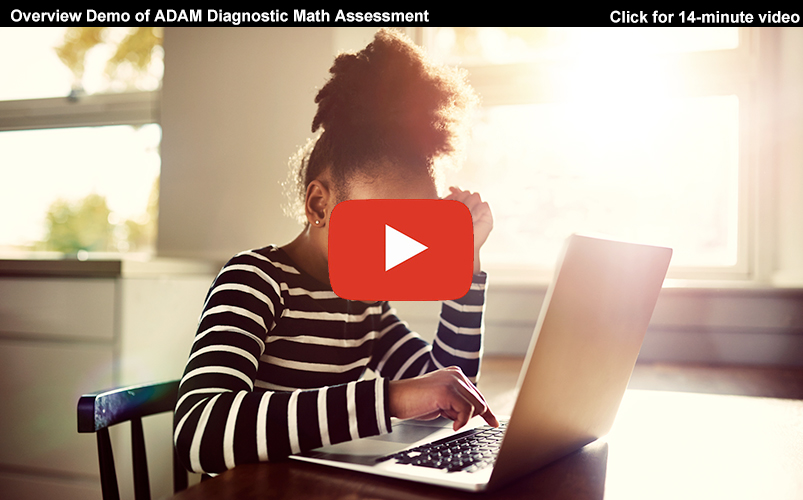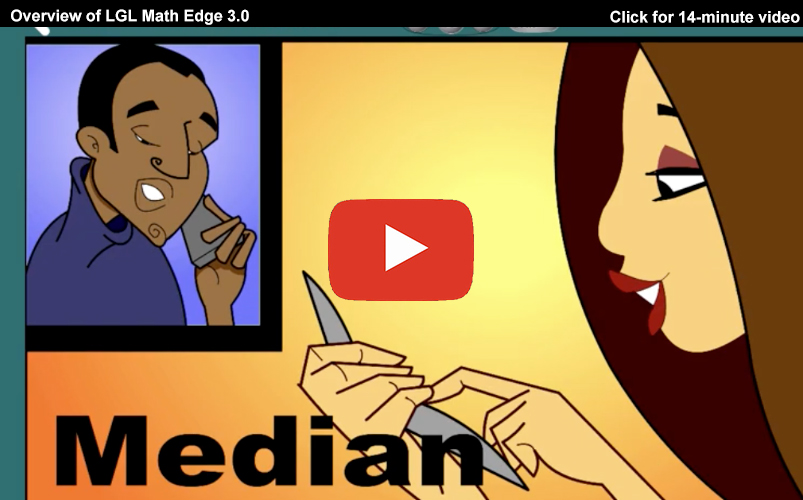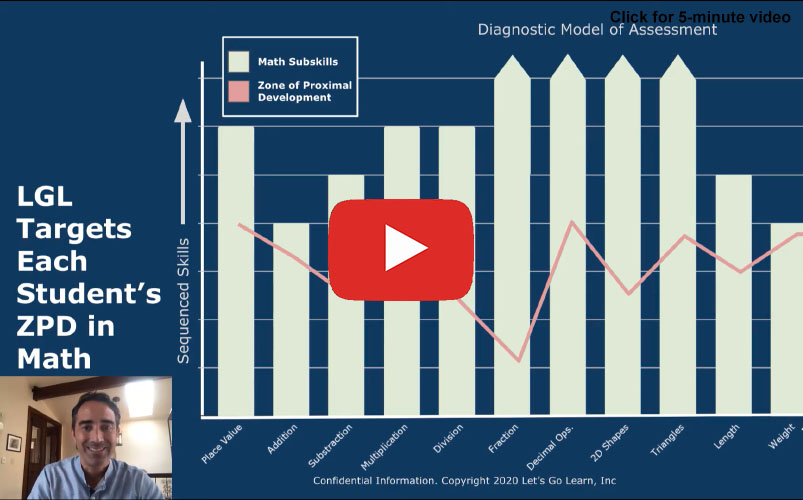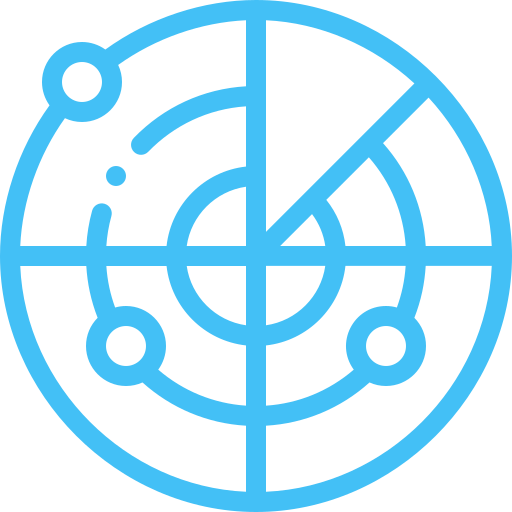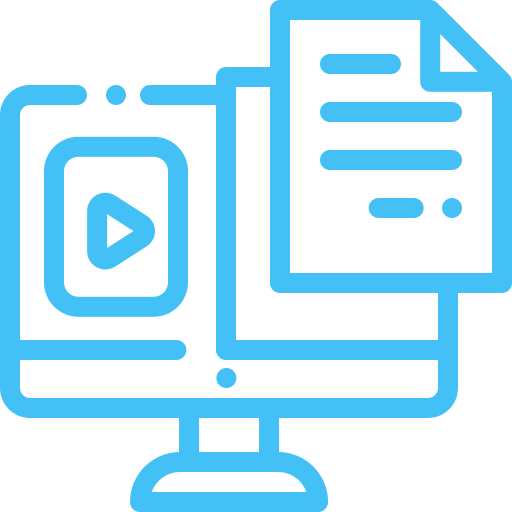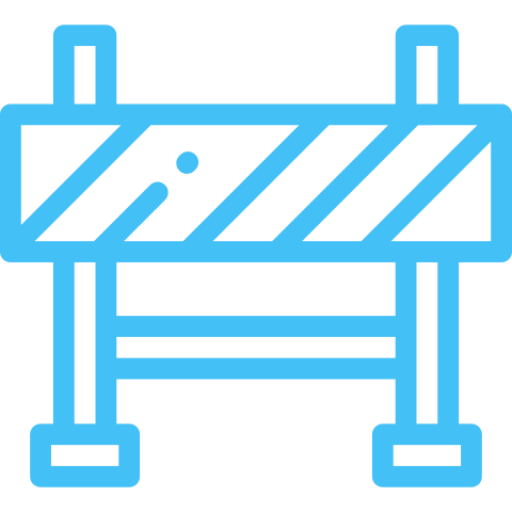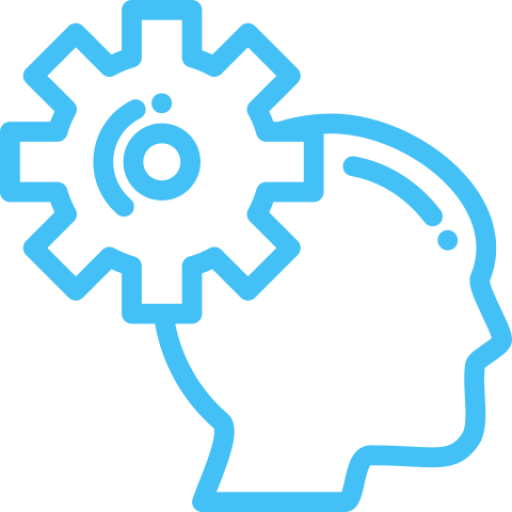Math Assessment and Personalized Learning
Empowering math initiatives with a platform to advance all students

Effective math assessment solutions and reform efforts begin with a plan centered around the student.

How is Let’s Go Learn different?
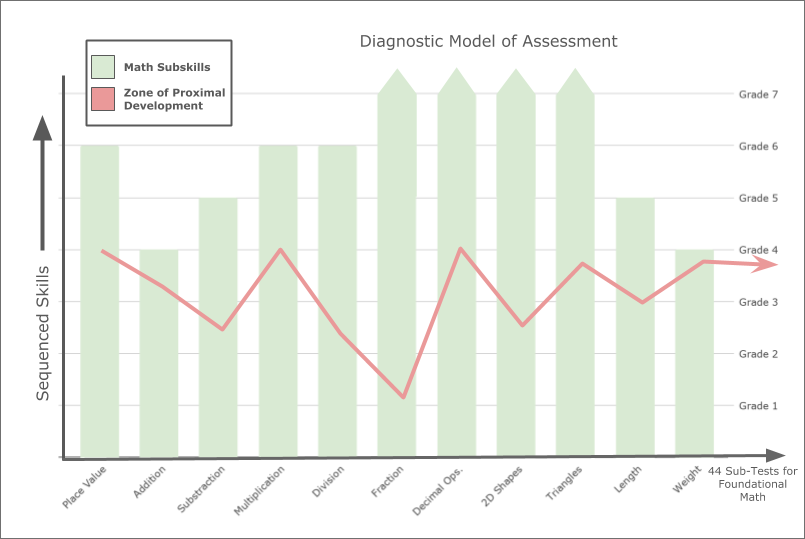
Before students begin grade-level instruction, our platform diagnoses learning gaps and provides instruction at their Zone of Proximal Development.
We support math initiatives for a phased-in approach
to math reform.
Question 1: Why do district math programs fail when they offer only core curricula and rely exclusively on grade-level benchmark tests?
Answer: Equality is their goal instead of equity. Students continue to fall behind. Year after year, districts see stagnant math proficiency scores. They fail in helping the majority of students thrive in math.
Case Study: See how Sussman Middle School boosted SBAC proficiency 11 points in one year. >


Question 2: How does committing to a personalized math model or framework lead to equity?
Answer: By choosing a personalized learning model for math, Let’s Go Learn breaks the cycle of fixed pacing guides and narrowly taught math content. Let’s Go Learn makes this transition easier as we simplify personalized implementation for each teacher.
It begins with a precise analysis of each student.
- Foundational math skills diagnosed in 44 sub-tests to maximize granularity.
- Clear reporting to support IEP writing and goal setting.
- Reporting to support individual, small-group, or whole-class instruction.
- Descriptive and actionable reports to share with parents and students.
- Automatic progress monitoring via weekly, monthly, or quarterly pre-made formative tests.
Then our system assigns a personalized learning path
for each student.
- Explicit instruction in each lesson.
- Animations, songs, and graphics help all students access the lessons.
- Gamification provides practice and ensures student engagement.
- Instructional levels range from K to 9th grade for all students, as appropriate.
- Students get what they need, not what a grade-level placement test assumes they need!
Our reports make student data accessible to teachers, students, parents, and administrators.
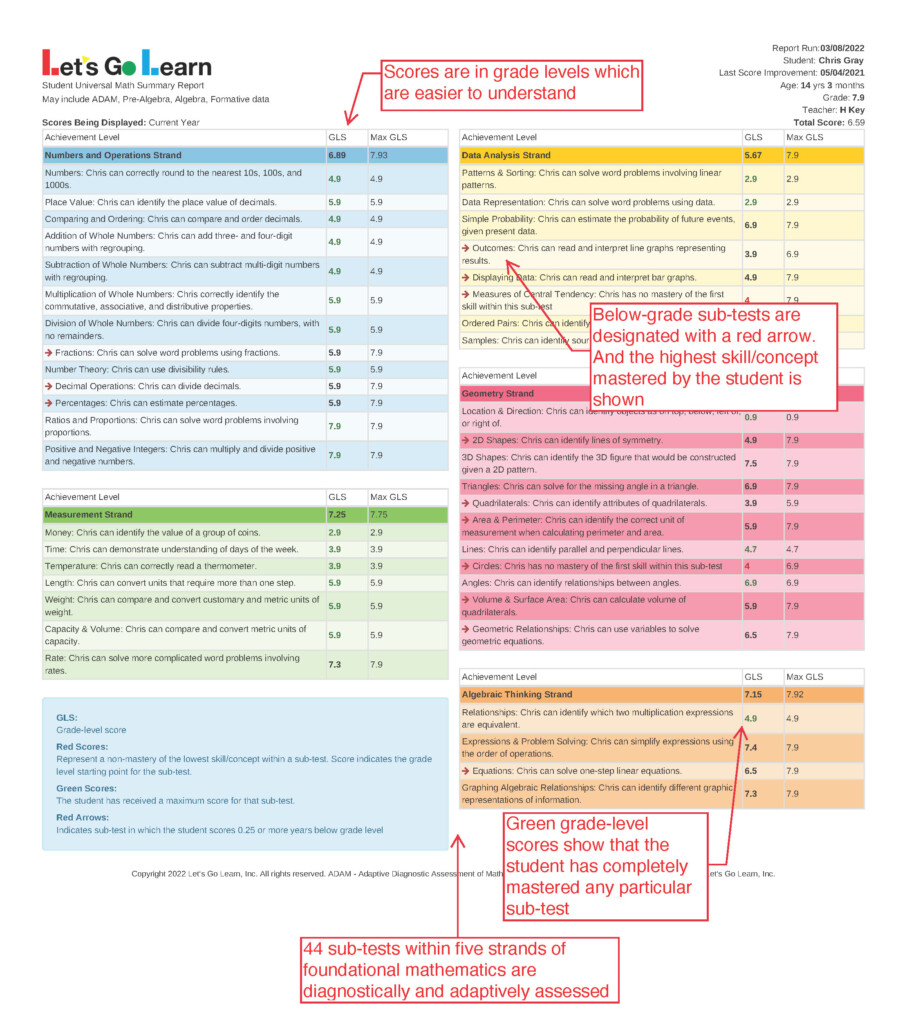
- Teachers can print reports to share with parents.
- Data can be used in IEP meetings.
- Data can be exported for special education compliance.
- Administrators can compare schools by school performance.
- Principals can improve their instructional leadership.
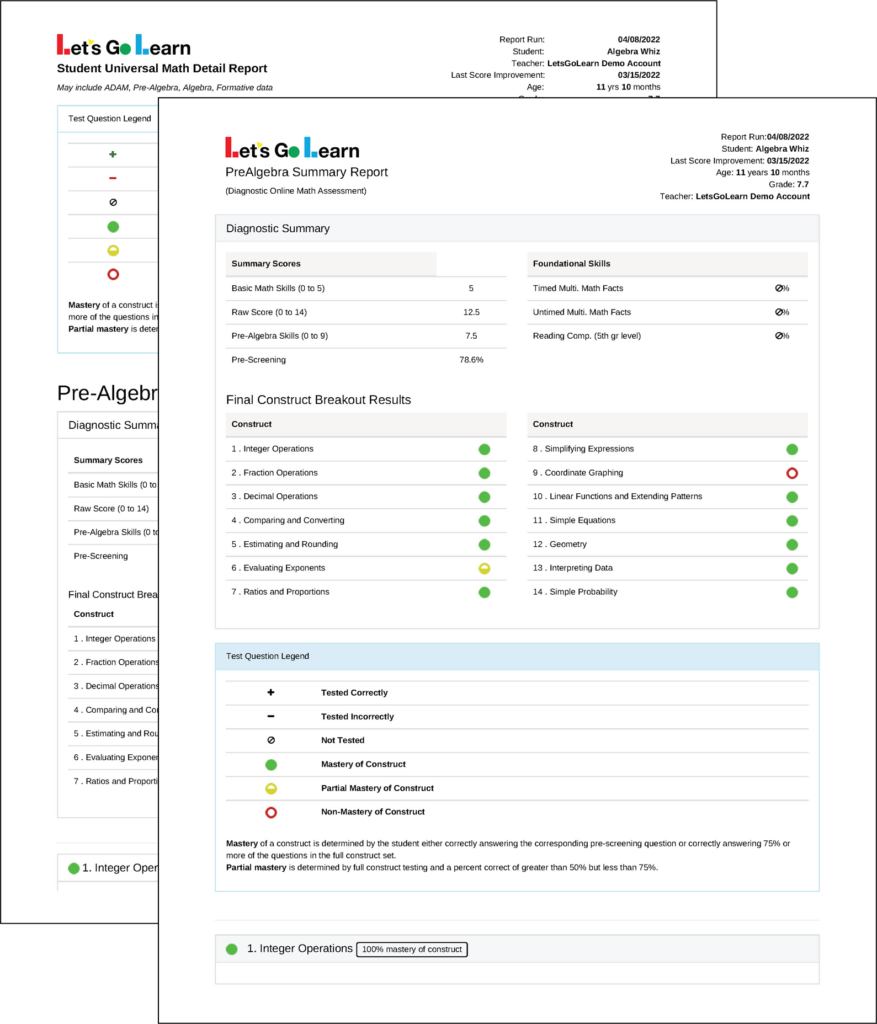
Next, monitor student progress with our automated formative assessments.

Used for progress monitoring required for special education or district formative testing initiatives:
- Pre-made short skills/concepts quizzes assignable with a click of a button.
- Pre-made sub-test adaptive tests assignable with a click of a button.
- All data vertically scaled, rolling up to a single math score card for each student.
- Turnkey progress monitoring system for teachers.
- No more teacher-made test creation required.
- Progress monitoring that is legally compliant for students with IEPs.
Our system continuously adjusts learning paths, using ongoing formative assessment data.
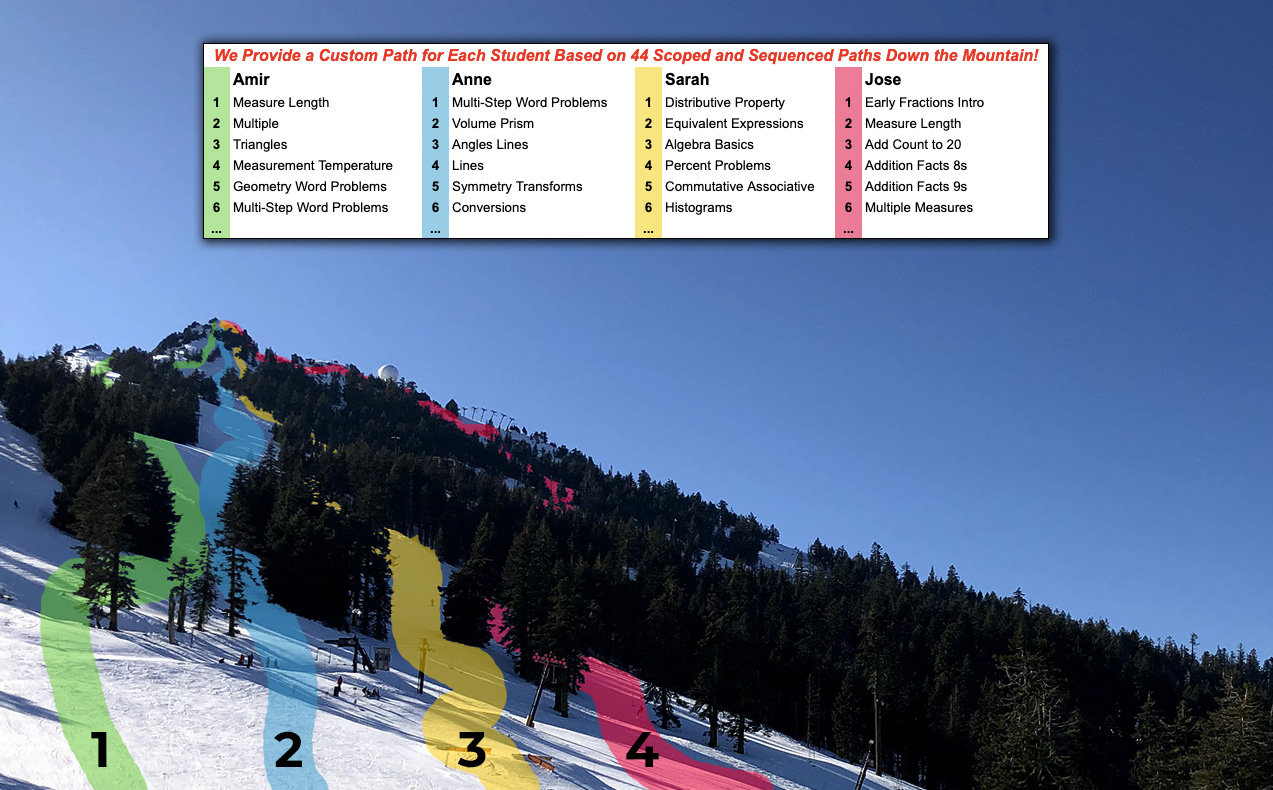
Use our flexible & fully automated system for all your math initiatives.
| Personalized K-8 Math | Secondary Intervention | 9th-grade Placement |
|---|---|---|
|
|
|
| Family Engagement | RTI/MTSS Support | Automatic Summer School Intervention |
|---|---|---|
|
|
|



